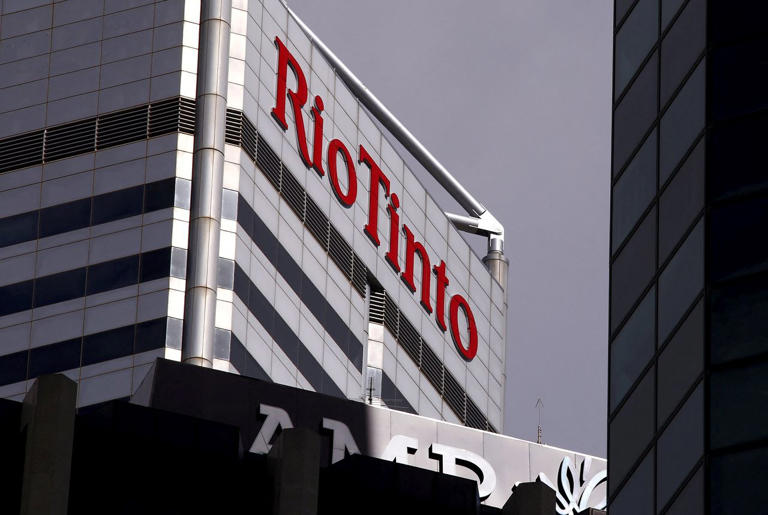Rio Tinto’s Chief Executive Officer, Jakob Stausholm, has reaffirmed the company’s commitment to maintaining its dual listing on the London and Sydney stock exchanges. This decision comes in response to recent suggestions from U.K.-based Palliser Capital, which proposed that Rio Tinto should eliminate its London listing and consolidate its corporate structure within Australia. Stausholm’s firm stance against this proposal stems from his assessment that unifying the company’s listings would lead to significant value destruction for shareholders.
Stausholm articulated that a comprehensive analysis, led by Chief Financial Officer Peter Cunningham and his team, concluded that the dual-listed structure plays a crucial role in preserving shareholder value. The evaluation considered the complexities and potential economic impacts of such a unification, including substantial tax implications and the challenges of obtaining the requisite shareholder approval.
Financial Performance Overview
Rio Tinto’s financial performance for the first half of the year reflects a strong rebound, with the company reporting a net profit of $5.81 billion. This figure represents a 14% increase from the $5.12 billion reported during the same period in the previous year. The improvement in profitability is notable given that the prior year’s results were impacted by write-downs associated with Australian alumina refineries.
Underlying earnings for the period totaled $5.75 billion, which was slightly below the consensus estimate of $5.79 billion. Despite this, the firm declared a dividend of $1.77 per share, maintaining the same payout level as the previous year. This steady dividend policy underscores Rio Tinto’s commitment to delivering consistent returns to its shareholders amidst a fluctuating market environment.
Operational Highlights and Market Dynamics
The company’s robust performance was significantly driven by the copper sector. Rio Tinto experienced a notable increase in copper production and prices during the first half of 2024. The surge in copper prices reached record levels, fueled by speculation surrounding the growth of clean energy and data centers. Although prices have since moderated, Rio Tinto benefitted from a nearly 6% increase in revenue per pound of copper sold compared to the previous year.
Rio Tinto’s copper operations were further bolstered by increased output at the Oyu Tolgoi mine in Mongolia and a recovery at the Kennecott mine in Utah, which had faced operational disruptions earlier in 2023. The company achieved a 13% increase in mined copper production year-over-year, highlighting its strong performance in this critical segment.
Conversely, Rio Tinto faced challenges in its iron ore division. The company, a leading global producer of iron ore alongside Brazil’s Vale, saw a 2% decline in iron ore shipments from its Australian operations during the first half of the year. Additionally, the average price received for iron ore fell by 1.3%, reflecting softer market conditions and increased competition.
Strategic Initiatives and Future Outlook
In light of these challenges and the evolving market landscape, Rio Tinto is advancing several key strategic initiatives. The company is progressing with a major iron ore project in Guinea and a lithium project in Argentina. These initiatives are part of Rio Tinto’s broader strategy to diversify its portfolio and capitalize on emerging opportunities in the minerals sector.
Additionally, Rio Tinto is expanding its copper-mining operations in the United States and Mongolia. The Oyu Tolgoi mine is expected to become the world’s fourth-largest copper mine by 2030, underscoring Rio Tinto’s commitment to scaling its copper production capabilities. The company aims to achieve an overall production increase of approximately 2% for the year and targets a compound annual growth rate of around 3% from 2024 to 2028 through its existing operations and new projects.
Stausholm highlighted that Rio Tinto is at a critical juncture in its growth trajectory. After a decade focused on productivity and shareholder returns, the company is now placing greater emphasis on expansion and strategic investments. The dual-listed structure remains a fundamental element of Rio Tinto’s strategy, given the complexities involved and the significant shareholder base in both London and Sydney.
While Stausholm acknowledged that BHP’s recent move to unify its corporate structure in Australia was driven by different circumstances, he emphasized that Rio Tinto’s situation is more intricate due to its substantial shareholder presence in London. He also noted that the potential tax costs of unifying the structure could be considerable, potentially amounting to billions of dollars.
Overall, Rio Tinto’s strong financial results and strategic initiatives reflect its resilience and adaptability in a dynamic market environment. The company’s focus on critical commodities like copper and lithium, coupled with its ongoing projects, positions it for sustained growth and success in the coming years.
